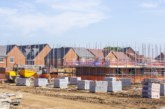Neil Woodhouse, director in the design team at national planning and development consultancy Turley, explains why the Government’s commitment to place design at the centre of planning policy should be welcomed – but warns there is still need for clarity on how improving design quality can be squared with proposed deregulation in the planning system.
The UK’s planning system is heading for a significant shake up. Last year’s report from the Building Better Building Beautiful Commission put its emphasis squarely on the importance of design quality of new housing schemes. Similarly, the Government’s latest paper, Planning for the Future, promised to embed design and placemaking principles at the centre of planning policy. Doing so, it hopes, will establish a planning system fit for the next century.
It’s certainly positive to see the Government placing such importance on design in the planning system. However, there are big questions that remain. In particular, the Government’s commitment to improving design quality appears at odds with its desire to deregulate some areas of the planning system. Commitments to extend permitted development rights and accelerate planning applications may help increase the rate of delivery of much needed homes, but they do not guarantee design quality. Squaring this circle is one of the key tests facing the Government’s planning whitepaper, due in spring.
Government has grand designs for the future of planning
Identifying and implementing meaningful design and placemaking principles is crucial to planning new, green neighbourhoods that can meet housing demand while promoting wellbeing, community cohesion and sustainability.
With ongoing pressure to deliver sustainable development, design will also play a key role in reducing carbon emissions in the built environment. As of February 2020, 281 local authorities have declared climate emergencies (climateemergency.uk Feburary 2020). For these authorities, prioritising sustainable development is key, and carefully considered design solutions are fundamental in easing the pressure placed on the environment by new developments.
Design also needs to consider the adaptability and longevity of new developments. Building only for today is not sustainable and is no longer good enough. Instead we need to ensure developments are built to respond to the changing and evolving needs of increasingly diverse communities and demographics in future generations.
A joined-up approach
While there is much to applaud about the Government’s focus on design, it’s unclear how it fits in within a wider agenda that encourages deregulation. Its approach simultaneously puts design at the centre of policy while also threatening quality.
One of the most eye-catching aspects of the Government’s housing policy agenda is the extension of permitted development rights. This has raised eyebrows as schemes enabled by permitted development rights have frequently been criticised for their quality. The practice of converting unsuitable retail and office buildings into residential premises under these rights has provoked particular criticism. Many feel this kind of development has created substandard residential premises, a result completely at odds with the Government’s aspirations for beautiful homes that are fit for the future.
Within this context it’s surprising to see the Government championing the further extension of permitted development rights, albeit there is a desire to remove barriers to investment. Under current plans, the Government is set to extend these rights to cover two-storey extensions on existing buildings. It’s also set to consult on allowing buildings on commercial and industrial sites to be demolished so that they can be used for residential developments. Whilst again this could improve the rate of delivery for new homes, it may also impact local character and identity as any buildings not formally protected in policy become easily disposable. The permitted development right to demolish does perhaps allow for better design consideration in new build, compared to the poor attempts to retrofit existing buildings for uses that they were never designed to accommodate, which have been seen in recent years. However, in doing so we would not want to assume that demolition is the right solution where high quality conversions can be achieved.
That’s not to say that these proposals are unworkable. However, it’s clear that the Government needs to provide further clarity on how the policy aims of creating high-quality neighbourhoods and deregulating the planning system can be reconciled. Both the planning white paper in spring and the forthcoming National Modal Design Code give the Government the chance to provide further guidance on this front. Taking this opportunity will be crucial if the Government hopes to create a system that provides homes, which have a lasting legacy, at pace.









